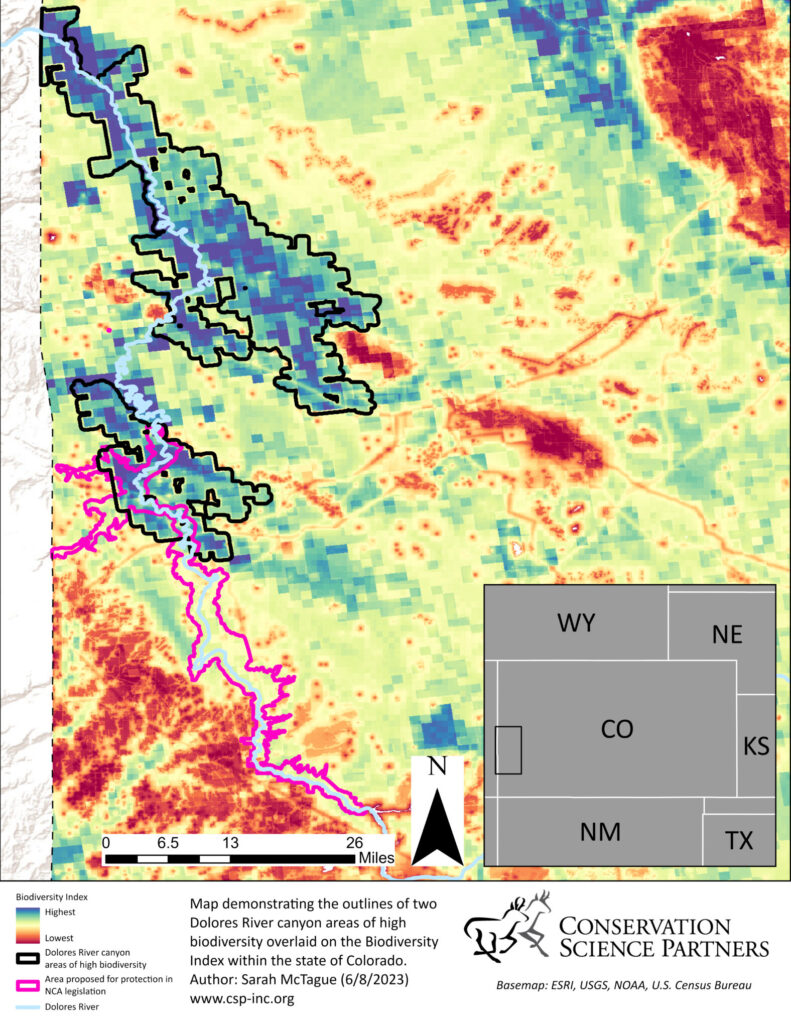The protection of biologically valuable or vulnerable lands and waters is a key strategy for reducing the impacts of climate change and biodiversity loss and has gained significant public momentum in recent years. In partnership with the Colorado Wildlands Project, Conservation Science Partners recently identified high biodiversity value areas on unprotected public lands in Colorado to inform state-wide protection efforts. The primary goal of this analysis was to offer decision-makers a road map, backed by the best-available science, to prioritize critical lands and waters for conservation policy action in Colorado. In a recently published report, CSP scientists identified over 70 high biodiversity value areas in the state, including several in the Dolores River region that stood out for their unique combination of size, intactness and biological richness. In fact, two of the ten largest unprotected biodiversity hotspots in Colorado were found in the Dolores River Canyon Country.
These findings are being used to inform a critical national monument designation in the region, supporting the effort to protect lands that contain important biodiversity attributes like imperiled species richness and ecological connectivity. While a national monument footprint has been proposed, the proposed area only encompasses a small portion of identified high biodiversity value land in the Dolores River Canyon. The work conducted by CSP is being used to advocate for an expanded footprint that better conserves areas of high biodiversity value, balancing the needs of protecting nature and sustaining local economies and preserving public access to this incredible place. Read more about our work in Colorado here.


